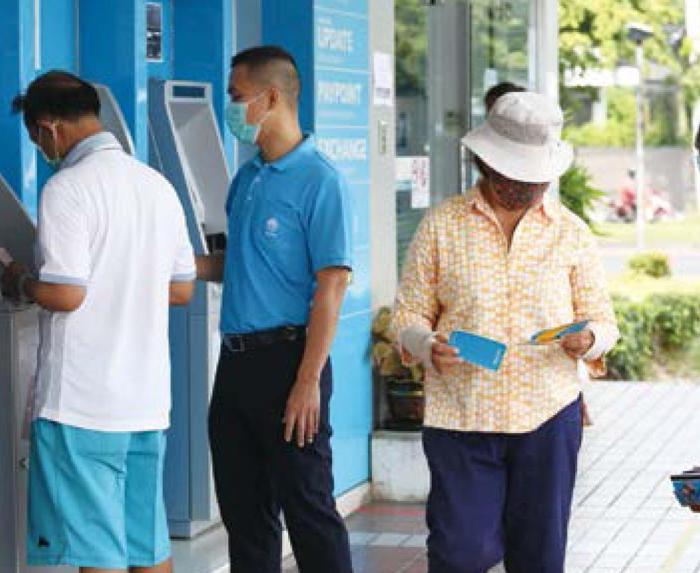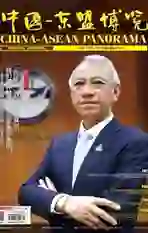泰国:抗疫与经济发展如何平衡?
2020-07-30


新型冠状病毒肺炎的爆发再次向人们证明了“健康是无价之宝”。疫情之下,泰国政府采取了一系列措施来遏制病毒蔓延,但同时这也让许多人陷入财富流失、工资减少的困境。
在控制和减轻疫情影响方面,泰国表现良好。自2020年4月27日起,新增病例数量增幅并不明显,甚至有几天无新增病例。约96%的感染者已完全康复,死亡率小于2%。
在采取公共卫生措施的同时,泰国政府还通过向人民提供贷款和财政援助来应对经济风险。一些观察家的比喻恰如其分:如果经济是一个急需氧气的病人,那么政府注入的现金流就像陈旧房间里的新鲜空气。
迄今为止,泰国已批准了3个阶段的经济救济措施,以满足企业家、蓝领阶层和家庭的需要,确保社会的每一个弱势群体,无论是以收入、援助还是贷款的形式,都能获得收入来源。政府的首要原则是保持资金流动性,让现金留在人民手中。3个阶段的经济救济目的分别是减轻公共开支负担、增加收入、保持经济引擎的润滑和运转。
在减轻开支负担方面,所有家庭的水电费减免3个月。个人和企业所得税的申报和缴纳期限已经延长。预扣税率在6个月内从3%降至1.5%。居住和农业用途的国家财产租赁费免收1年。此外,金融机构也将推迟客户支付汽车、摩托车和住房贷款。
而想要增加人民收入并非易事,因为所有的经济增长引擎都近乎瘫痪。政府已经成为市场上最后一个“大手笔”者,它正在利用一切可能的渠道和机制确保救济惠及每个人。例如,下岗的非正式工人可以在3个月内领取5000泰铢的补贴,而在社会保障基金登记的工人可以在长达200天的时间里领取工资的70%。一项400亿泰铢贷款计划将确保有资格获得1万泰铢紧急贷款的人,每月仅需承担0.1%的利率。同时,中小企业可以向政府储蓄银行和中小企业银行申请低息贷款。政府还批准了一项1500亿泰铢的预算,用于向1000万注册农民发放每人1.5万泰铢。
在维持经济部门方面,泰国银行主动向金融机构提供5000亿泰铢的软贷款,以便它们能够向某些中小企业提供贷款。另外还拨款1万亿泰铢,用于振兴农业、旅游業等各个部门。此外,泰国还投资人力资源,为他们提供必要的技能培训,如为导游提供语言培训,为企业家提供企业管理培训等。
最重要的是,自2020年5月3日以来,基于疫情防治现状,政府分阶段逐步放宽了某些限制,复苏企业。首批恢复服务的机构包括餐馆、小吃摊、街头摊贩、市场、发廊、医疗设施和高尔夫球场。随后,购物中心和大型企业也允许重新开业。然而,这并不意味着泰国防治疫情的斗争已经结束。相反,还有很长的路要走。
泰国疫情防控状况似乎态势良好,但要复苏经济实则困难重重。专家预测,泰国和世界各地经济年增长率不容乐观。尽管如此,所有部门都在利用疫情期间生产“暂停”的机会,为后疫情时代重启经济做必要的准备。
多年来,泰国一直在规划未来,致力于成为一个创新能力强、可持续发展的国家。现如今,疫情恰巧成为这一规划的加速器:在没有游客的情况下,泰国通过开发基于技术的解决方案以及扩大电子商务应用来提高旅游服务质量。泰国国内的自然公园和国家公园进入“休整期”,恢复到了原始状态。曼谷廊曼国际机场正在进行翻修。考虑到社交距离的需要,泰国旅游局也把目光转向小型旅游群体,注重质量,强调健康旅游。
泰国的经济活动需要像其他国家一样,更多地转移到线上。传统的商业形态正在被“新常态”重新定义。经销商们纷纷搭上电子商务列车,希望自己的产品销量走俏,扛过疫情。会议、商业活动甚至贸易展览都在线上进行。甚至农民和企业家也在接受培训,提高自身的线上素养和技能,以便进入不断繁荣的电子商务市场。
此外,在研究和技术方面,泰国作出的努力更大,尤其是在创新医疗解决方案领域。如今,泰国有了辅助机器人和远程医疗,帮助医生和护士远程照顾病人。
所有这些,都将提振泰国经济,就像1997年发生亚洲经济危机时,泰国采取措施应对重创一样。当时,普密蓬·阿杜德国王陛下提出“充足经济”哲学理论,鼓励在合理和适度的基础上采取更加平衡的发展方法。现在是时候重新探讨这一理念,来保护泰国未来免受外部冲击。
在国家恢复常态和国内经济重获发展势头之前,复苏经济任重道远。但只要保持初心,世界经济就可以复苏,并拥有更强的适应力和团结意识。
·来源:泰国外交部
·编译:陈志莹
Vietnam is struggling with alarming air pollution. Its two biggest cities, Hanoi and Ho Chi Minh City, are now among the top 15 polluted cities in Southeast Asia.
Fine particulate matter (PM2.5) is the most concerning air pollutant in Vietnam. In 2019, Hanoi had only 8 days with PM2.5 lower than the national standard of 50 micrograms per cubic metre (?g/m3). The air quality in Ho Chi Minh City was not much better, with only 36 days below the standar.d. For the remaining days of the year, over ten million people in these cities were exposed to heavily polluted air.
Finer particles are particularly harmful to human health as they can penetrate deep into the lungs and cardiovascular system, causing diseases including stroke, heart disease, lung cancer, chronic obstructive pulmonary diseases and respiratory infections. Up to 60,000 deaths in Vietnam in 2016 were related to air pollution. On average, air quality being below the World Health Organizations standard reduces life expectancy by one year and costs the country about 5% of GDP per year.
Second, policies promoting the use of greener vehicles could reduce air pollution. Phasing out obsolete and polluting vehicles could be encouraged by providing subsidies for trading in old cars, paid for by higher taxes on new vehicles. This would help address distributional effect concerns, as owners of old vehicles tend to be from lower-income households. The government could also issue enabling policies to promote electric vehicles (EVs), such as allowing only EVs in downtown areas and an income tax reduction for EV manufacturers to make them more affordable.
Third, pollutant pricing would be appropriate given the polluter pays principle. The environmental protection tax regulation could be revised to better target polluting fuels such as diesel and coal. Carbon pricing would reduce the consumption and production of carbon-based products and promote a low-carbon economy. This would alleviate air pollution and mitigate climate change, which is another threat to Vietnams economic and social security.
Fourth, a smooth and efficient transition to a renewable electricity system would help mitigate air pollution and climate change. Enabling policies such as feed-in tariffs and reverse auctions for solar and wind power would maintain the momentum of a recent boom in solar power that made Vietnam the top country in Southeast Asia for solar power installation. Vietnam could set more ambitious targets for renewable energy, given its high potential for solar, wind and off-river pumped hydropower.
Last, fossil fuel subsidy reform could reduce the use of the dirty fuel and free up the current annual fossil subsidy of US$ 612 million or 0.3% of Vietnams GDP for other welfare activities such as health, education and environmental protection.
It is the perfect time to prioritise these potential measures by revising the Law on Environmental Protection, which is planned to be approved by the National Assembly at the end of 2020. Vietnam has the capacity to turn around its pollution problem through careful regulation.
· Source: East Asia Forum
